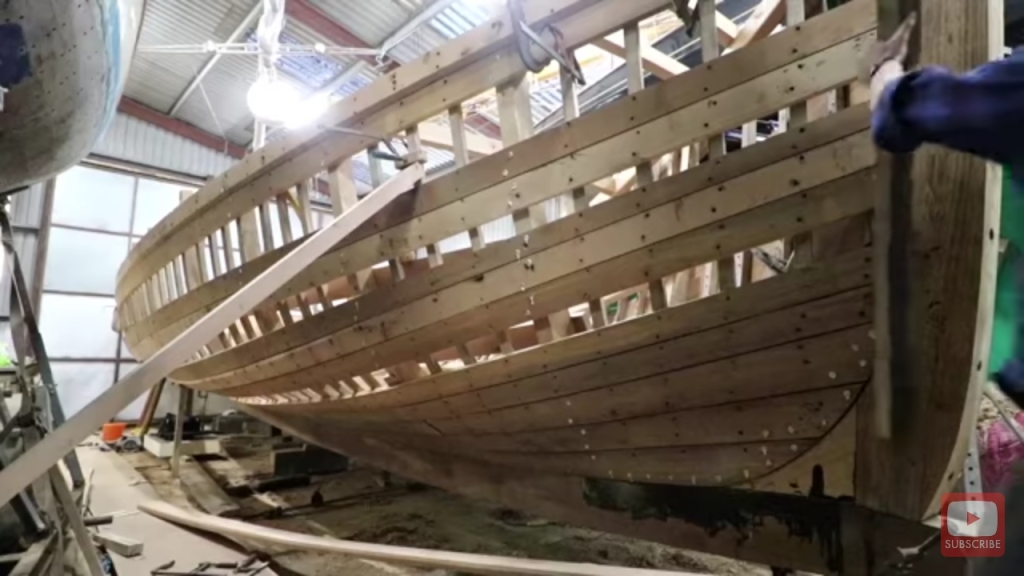My most recent surrogate for sailing has been to watch You Tube videos from the Sampson Boat Company – an addictive glimpse into a world where something beautiful, functional and powerful is being constructed out of wood, in a project run by an English boatbuilder working in the USA. I highly recommend it to anyone, boat person or otherwise, who wants to wind down from today’s tensions. This is a link. The YouTube viewing figures show that hundreds of thousands of others have found that out too.

I’ve built three small dinghies from kits, all less than 12 feet, and renovated two others. But that’s in a completely different world, and I can’t even pretend to be a boatbuilder round here – our next door neighbour is a professionally trained wooden yacht builder and repairer.

This month‘s other sailing surrogate was a book published first in 1961 called All Season’s Yachtsman by Peter Haward, a professional yacht delivery skipper, full of the most extraordinary tales of how to deal with heavy weather round the UK and down to and across the Mediterranean.
As a hired skipper, he often had to deal with yachts in poor condition as well. He experienced one terrible tragedy, when a young man crewing for him was lost overboard. A result of that was Haward’s development of the safety harness, and its subsequent widespread adoption on sailing yachts.
The book was lent to me by David Fairhall, who crewed for Haward and is mentioned in the book. All Season’s Yachtsman was a precursor to the classic text Heavy Weather Sailing, which appeared in 1967 from the same publisher, Adlard Coles, and is still in print, much updated. Adlard Coles himself wrote the first edition of Heavy Weather Sailing, and I can’t help thinking he probably got the idea from Peter Haward’s book, which he had published on his eponymous firm’s list 6 years earlier.
I have just ordered my own paperback copy of Haward’s book, retitled and republished in 1990, from a second hand seller on Amazon, to keep next to Heavy Weather Sailing.

Postscript
This month was almost entirely occupied by overseeing the building of a small barn-cum-garage at home. Now the roof is on, I see it happens to cover just the right size space for a workshop to build another Iain Oughtred dinghy one day, maybe bigger than the Feather pram, perhaps with a sail. Tempting. Who uses a garage for cars anyway, now modern ones are so rustproof? Most neighbours use them for workshops or storage.
I would buy another kit from Jordan Boats, the firm that supplied the feather pram. They’re quite basic, leaving much wood to be bought and made into components from scratch, but they do two absolutely crucial operations: the planking is computer cut, saving the skilled process of cutting and fitting every curved plank individually, which I’ve been watching on the latest Sampson video; and the hull moulds are outlined and ready to cut and assemble.
I’d keep any new boat modest in size. When I built a far simpler 11 foot hard-chine plywood sailing dinghy many years ago, I shared the workspace with a couple building a 20 foot wooden boat. That’s when I saw the cube law in operation: the amount of material and work involved in a boat rises roughly in proportion to the cube of the length, so I’d guess a 20 foot boat is 8 times as big a project as a 10 foot boat.
